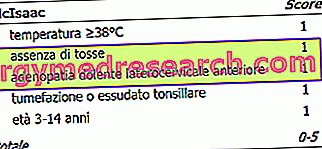
What is Cymbalta?
Cymbalta is a medicine that contains the active substance duloxetine. It is available in gastroresistant capsules (white and blue: 30 mg; green and blue: 60 mg). "Gastroresistenti" means that the contents of the capsules reach the intestine intact without being decomposed during passage through the stomach. This prevents the effect of the active ingredient from being neutralized by the action of the acids present in the stomach.
What is Cymbalta used for?
Cymbalta is used to treat adults with the following conditions:
- episodes of major depression (very depressed moods lasting at least two weeks),
- pain caused by diabetic peripheral neuropathy (deterioration of nerves in the limbs that can occur in diabetic patients),
- generalized anxiety disorder (chronic anxiety or nervousness due to issues related to daily activities).
The medicine can only be obtained with a prescription.
How is Cymbalta used?
In cases of major depression, the recommended dose of Cymbalta is 60 mg once a day. The therapeutic response is generally observed after two to four weeks. It is recommended to continue treatment for several months to prevent a return of the disease.
In cases of diabetic neuropathic pain, the recommended dose is 60 mg a day, however for some patients a higher dose may be needed, equal to 120 mg a day. The response to the drug should be evaluated after two months of treatment and, if effective, at least every three months in the subsequent period.
In cases of generalized anxiety disorder, the recommended starting dose is 30 mg once a day, but the dose can reach 60, 90 or 120 mg depending on the patient's response. Most patients will need 60 mg a day. Patients who also experience episodes of major depression should start with 60 mg once a day. It is recommended to continue treatment for several months to prevent the recurrence of the disorder.
Cymbalta should be taken with or without food. When treatment is stopped, the dose should be reduced gradually.
How does Cymbalta work?
The active substance in Cymbalta, duloxetine, is a serotonin and noradrenaline reuptake inhibitor. It works by preventing the neurotransmitters 5-hydroxytryptamine (also called serotonin) and Noradrenaline from being reabsorbed by nerve cells in the brain and spinal cord. Neurotransmitters are chemicals that allow nerve cells to communicate with each other. By inhibiting its re-uptake, duloxetine increases the number of such neurotransmitters in intracellular spaces by improving the level of communication between nerve cells. Since these neurotransmitters are involved in maintaining a high mood and reducing the sensation of pain, blocking the reuptake and return to nerve cells can alleviate symptoms of depression, anxiety and neuropathic pain.
How has Cymbalta been studied?
For major depression, Cymbalta was studied in seven main studies involving 2 256 patients. Six of the studies evaluated the effects of Cymbalta in the treatment of depression, and one evaluated its effects in preventing the return of the disease (relapse). In treatment studies, Cymbalta was compared with placebo (a dummy treatment) for up to six months. Some studies have also compared Cymbalta with paroxetine (another antidepressant). The variation of depressive symptoms, assessed on the basis of a standard scale, was the main parameter for determining efficacy. The relapse prevention study compared Cymbalta with placebo over six months in patients who had initially responded to Cymbalta, evaluating the time until symptoms returned.
For the treatment of neuropathic pain, Cymbalta has been evaluated in two 12-week studies involving 809 diabetic adults with daily pain for at least six months but without major depression. Three different dosages of Cymbalta were compared with placebo. The main efficacy index was the weekly variation of pain severity, evaluated with an 11-point scale in a daily diary compiled by the patients.
For the treatment of generalized anxiety disorder, Cymbalta was compared with placebo in four studies involving a total of 1 908 patients. The reduction of symptoms after nine to ten weeks, measured on the basis of a standard scale of evaluation of anxiety, was the main measure of effectiveness. Some studies have compared the effectiveness of Cymbalta with that of venlafaxine (another treatment for generalized anxiety disorder). A fifth study compared Cymbalta with a placebo in preventing relapses in 429 patients who had initially responded to Cymbalta, evaluating the time elapsed before symptoms returned.
What benefit has Cymbalta shown during the studies?
Four of the six studies that examined the treatment of major depression showed the superior efficacy of Cymbalta compared to placebo in reducing symptoms, while the other two studies failed to demonstrate a similar effect. Despite the conflicting results reported from the studies for the different dosages, the two studies that compared Cymbalta 60 mg once a day compared to placebo showed that, after eight weeks of treatment, the symptom score of about 21 points recorded in basal conditions it was reduced by about 9 points in patients receiving Cymbalta, compared with a reduction of about 6.5 points in patients treated with placebo. Cymbalta had a similar effect on symptom scores compared to paroxetine. In the relapse study, the time elapsed before symptoms reappeared was higher in patients treated with Cymbalta 60 mg once a day: these patients had a 17% chance of developing symptoms again, compared to a 29% probability estimated for patients treated with placebo.
For the treatment of diabetic neuropathic pain, Cymbalta at doses of 60 mg once or twice a day was more effective in reducing pain than placebo. In both studies, pain reduction was observed from the first week of treatment up to week 12, with patients treated with Cymbalta who reported scores lower than 1.17 to 1.45 points than those treated with placebo.
For generalized anxiety disorder, Cymbalta was more effective than placebo in treating the disorder and preventing its recurrence. In the treatment studies, the anxiety score was around 26 points at the start of the studies, falling by about 13 points in the patients taking Cymbalta and about 9 points in the placebo patients. Cymbalta had a similar effect on anxiety scores compared to venlafaxine. The time elapsed before the symptoms reappeared was greater
in patients treated with Cymbalta: after six months, 14% of patients taking Cymbalta experienced a relapse compared to 42% of patients treated with placebo.
What is the risk associated with Cymbalta?
The most commonly reported side effects with Cymbalta (occurring in more than 1 patient in 10) are nausea, headache, dry mouth, drowsiness (drowsiness) and dizziness. Most of these effects were mild or moderate and occurred early during therapy, showing a tendency to decrease in intensity with continued treatment. For the full list of all side effects reported with Cymbalta, see the Package Leaflet.
Cymbalta should not be used in people who are potentially hypersensitive (allergic) to duloxetine or any of the other substances. Cymbalta should not be used concomitantly with monoamine oxidase inhibitors (another type of antidepressants), with fluvoxamine (another antidepressant), or with ciprofloxacin or enoxacin (types of antibiotics). Furthermore, Cymbalta should not be used in patients suffering from certain liver disorders or severe kidney problems. Treatment should not be given to patients with uncontrolled hypertension (high blood pressure), due to the risk of hypertensive crisis (sudden and dangerous rise in blood pressure).
As with other antidepressants, isolated cases of suicidal thoughts and behavior have been observed in patients receiving Cymbalta, especially in the first few weeks of treating depression. Patients on Cymbalta therapy who have distressing thoughts or experiences at any time should immediately inform the attending physician.
Why has Cymbalta been approved?
The Committee for Medicinal Products for Human Use (CHMP) considered that Cymbalta's benefits are greater than its risks for the treatment of major depressive episodes, diabetic peripheral neuropathic pain in adults and generalized anxiety disorder. The Committee therefore recommended that Cymbalta be given marketing authorization.
More information on Cymbalta
On 17 December 2004, the European Commission issued a marketing authorization for Cymbalta, valid throughout the European Union, to Eli Lilly Nederland BV. The marketing authorization was renewed on 17 December 2009.
The full EPAR for Cymbalta can be found here.
Last update of this summary: 12-2009



